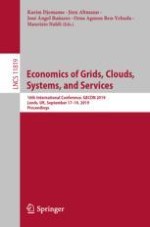This book constitutes the refereed proceedings of the 16th International Conference on Economics of Grids, Clouds, Systems, and Services, GECON 2019, held in Leeds, UK, in September 2019. The 12 full papers and 10 short papers presented in this book were carefully reviewed and selected from 48 submissions. This GECON 2019 proceedings was structured in selected topics, namely: blockchain technology and smart contracts; cost-based computing allocation; resource, service and communication federations; economic assessment, business and pricing models; blockchain and network function virtualization technologies; economic models for cyber-physical systems, industry 4.0 and sustainable systems; resource management; and emerging ideas.
